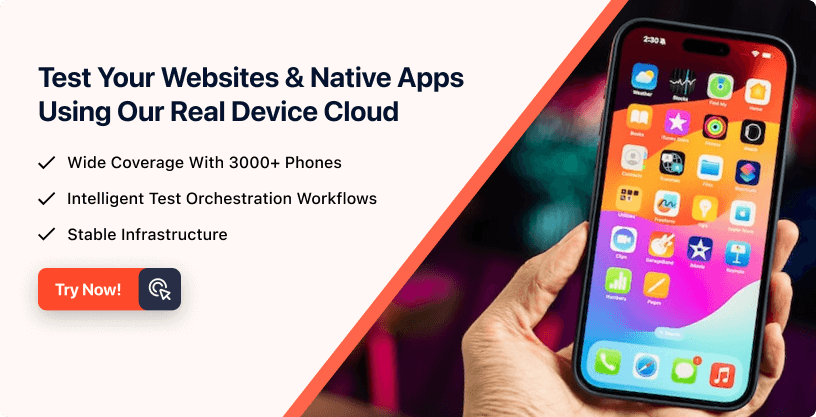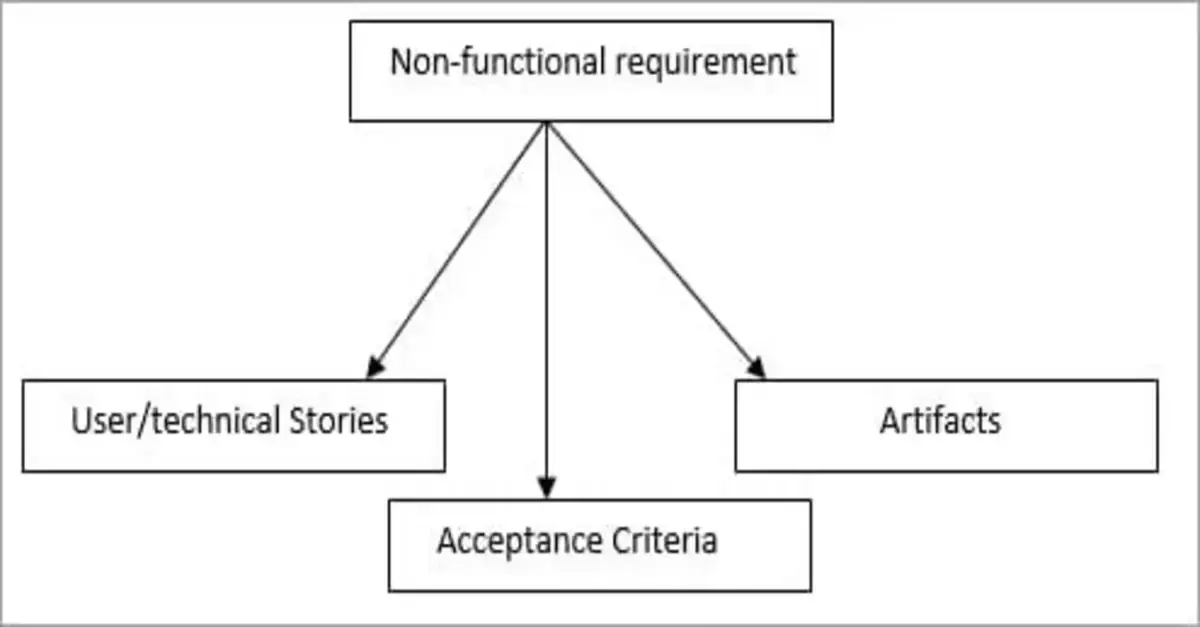
Non-functional testing involves validating the performance, reliability, utility, and other non-functional aspects of a software application. Further, this testing assesses a system's readiness for non-functional parameters that aren't typically addressed in functional testing.
Every software has its own functionality. You would expect a food delivery app to deliver your favorite dishes when you click on “Order food.” The job of a non-functional tester will be to test if you can easily navigate to the “Order food” button. They would also test if more than the ‘n’ number of users could place an order simultaneously from any browser/OS/device configuration.
Non-Functional Testing is a type of software testing that verifies the non-functional aspects of a software application. It is designed to assess the readiness of a system according to several criteria not covered by functional testing. Non-functional testing includes evaluating a system's performance, reliability, usability, efficiency, maintainability, and scalability.
Non-functional testing is crucial because it deals with aspects that impact the user experience and the application's effectiveness in the real world. It helps ensure that the software meets the established standards and provides a high-quality experience to the end-users.
Factors such as performance, stress resistance, and reliability aren’t related to functionality, in other words, how you perform the operations of a system. Yet, they determine how your users would feel when they are working on your software system.
They can be deal-breakers or deal-makers for software testers. Hence they deserve equal importance as functional testing.
Does it come under Black Box testing or White Box Testing? Obviously, non-functional testing is one of the black box testing methods since it covers the system’s external behavior instead of the system's internal workings.
We need non-functional testing to increase the product's efficiency, portability, usability, and maintainability. This way, you can reduce production risk, which can hamper the release velocity of your product. You can also increase the ROI of your sales and marketing efforts while you reduce the cost directly proportional to the non-functional product aspects.

The objective of non-functional testing is to verify the requirement specifying the criteria you can use to judge any system operation, such as maintainability, accessibility, performance, security, and availability. Some objectives include:
Non-functional testing is the backbone of user experience for any software product. Here is why you can gain the upper hand over end-user experience if you involve non-functional testing:
In spite of the advantages that you get with non-functional testing, there are a few challenges as well:
With functional testing, you can perform mobile app testing or web application testing against different functional specifications and requirements. Here, the tester needn’t worry about the application’s source code. When you provide the test input, you must ensure that the output you received is right and compare both
Through non-functional testing, you test the system's behavior. This type of testing concerns testing the system readiness per different non-functional parameters unaddressed by functional testing.
Here is the difference between functional testing and non-functional testing:
| Functional Testing | Non-functional Testing |
|---|---|
| You can verify the actions and operations of an application. | You can verify how the application behaves. |
| Customer requirements play a huge role in this type of testing. | Customer expectations play a huge role in this type of testing. |
| You can easily enhance the application behavior. | You can easily improve the application performance. |
| You can easily execute manual functional testing. | It’s tough to perform non-functional testing manually. |
| You get to test what the product does. | You get to test how the product does what it does. |
| Functional testing helps assess business requirements. | Non-functional testing helps assess the performance requirement. |
| Functional testing is performed before your application goes live. | Non-functional testing includes tests such as maintainability and documentation, which happen after testing. |
Do you want to know what’s beyond functional testing? Here is what Devender Sharma has to say in TestMu 2022:
There are many types of non-functional testing. The most important ones are listed below:
Continuous quality cloud platform like LambdaTest lets you perform cross browser compatibility testing of your websites and web applications across 3000+ real browsers, devices, and operating systems. With its real device cloud, you can test applications in real-world scenarios and get accurate results.
When you perform testing, you focus more on functional testing to test the product functionality. But, we cannot forget how important non-functional testing is. We need to consider the testing requirements right from the start of the project.
We can use non-functional requirements such as the expected performance output from the software or the application under test. This can include the time the software takes to operate a unique system.
Non-functional requirements can also help you capture the user behavior when many people use the software or system simultaneously. Most of the time, the servers might be unavailable or busy, thanks to heavy load. The best example is a college website where exam results are obtained.
Hence you need to document the non-functional requirement properly. When you perform the test properly, you can also get high-end satisfaction in terms of potential customer usability.
Even though this testing doesn’t impact the business directly on the functionality aspects, you can amplify the user-friendliness and user experience to the next level. This will lead to high-end software quality.
In agile, you can capture the non-functional requirement using different inputs. These are a few ways through which you can capture it:

You can capture the non-functional requirement with technical or user stories. Whether you capture non-functional requirements in the form of a user story or any other requirement, both remain the same. The major difference between a technical story and the user is that the user story would require discussion and consist of visibility.
Acceptance Criteria is the point at which your customer can accept your product through user acceptance testing (UAT). You might also be unable to test the non-functional requirements in each story when you perform every iteration. Hence you need to add or test the requirements with only the relevant iteration.
You need to prepare a separate artifact to manage the non-functional requirements. This can help you develop a better idea of what you need to test and how you can do it in different iterations.
Performing non-functional testing is easy and simple. Here is a detailed step-by-step method to perform non-functional tests:
There are a few points you must remember to make non-functional testing memorable and productive. Here they are:
Non-functional testing is how we test the properties of the application that doesn’t form a critical base for functionality. Instead, it must add power to the end-user experience.
The goal of functional testing is to validate different software actions. On the other hand, Non Functional testing can validate how the software performs. The best functional testing example is checking how the payment page functionality works. Non Functional testers would check if the dashboard can load within 2 seconds.
Black Box Testing, under the definition of the International Software Testing Qualifications Board (ISTQB), comes either under non-functional or functional testing, with no reference to the system or component’s internal structure.
Non-functional testing enhances user satisfaction, safeguards data, and improves system reliability, ultimately leading to higher quality software.
Non-functional testing ensures that software not only meets functional requirements but also delivers optimal performance, security, and usability, meeting user expectations and business needs.
Challenges include varying device configurations, network conditions, and platform-specific behaviors, necessitating comprehensive testing across different scenarios.
Non-functional testing will continue to evolve to address challenges posed by technologies like AI, IoT, and cloud computing, ensuring that applications deliver optimal performance and user experience.
Yes, non-functional testing, particularly performance testing, helps identify hidden bottlenecks, such as memory leaks and inefficient algorithms, which can impact application speed and responsiveness.
Usability testing assesses user interaction, navigation, and overall user experience, ensuring that the application is intuitive and user-friendly.
Performance testing helps ensure the application's responsiveness, scalability, and stability under various loads, preventing bottlenecks and slowdowns that could affect user experience.

Amrita is an Ex employee at LambdaTest. She loves to explore the latest trends in emerging technologies, and deep dive into tech research. Travel, Food, Books. These are the nectars of her life. She is a staunch bibliophile lost somewhere in the world of muggles.

Shahzeb currently holds the position of Senior Product Marketing Manager at LambdaTest and brings a wealth of experience spanning over a decade in Quality Engineering, Security, and E-Learning domains. Over the course of his 3-year tenure at LambdaTest, he actively contributes to the review process of blogs, learning hubs, and product updates. With a Master's degree (M.Tech) in Computer Science and a seasoned expert in the technology domain, he possesses extensive knowledge spanning diverse areas of web development and software testing, including automation testing, DevOps, continuous testing, and beyond.
Did you find this page helpful?